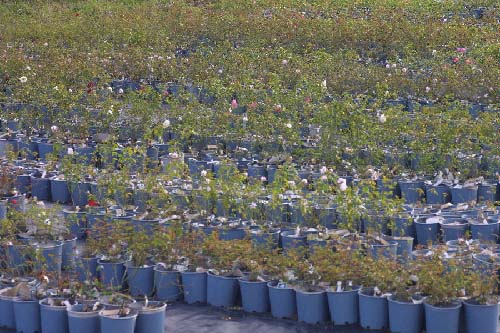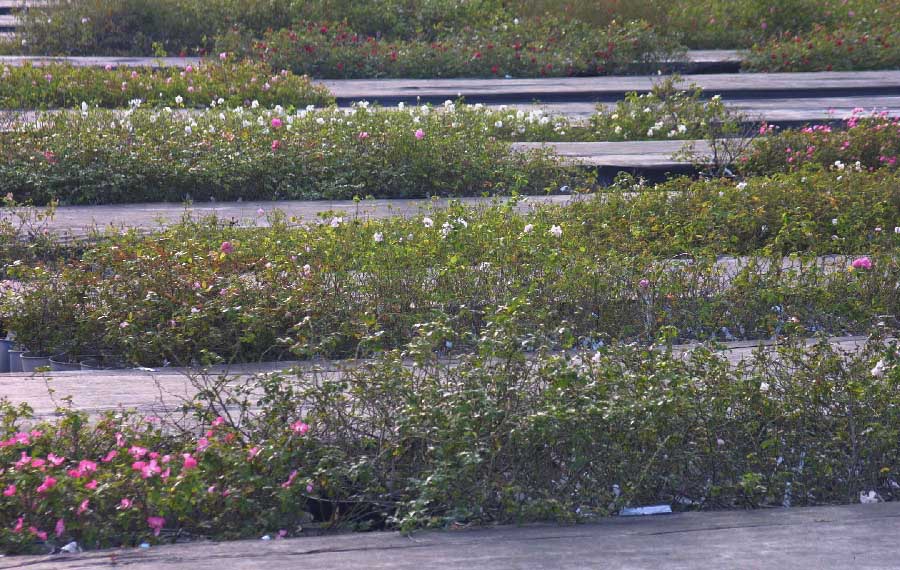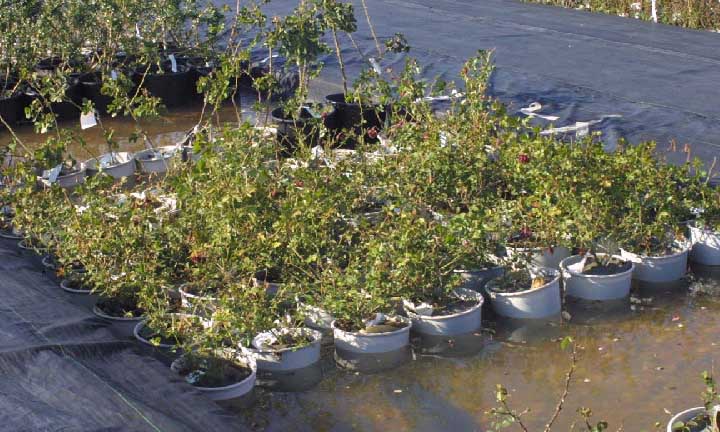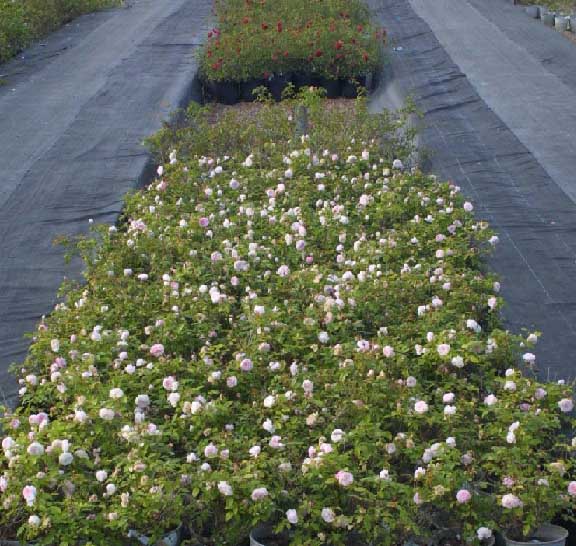The Vintage Rosery
P.O. Box 1127
Needville, Texas 77461
When growing thousands and thousands of roses, additional challenges present themselves due to the shear volumes of activities. Watering is one of the most important tasks and the most frequent. In the heat of the summer, roses in two-gallon containers need to be drenched three times a week.
|
 Rows and rows of roses (say that three times really fast).
|
This photo is a typical scene in a large growing operation. Containers are lined up in rows and watered through an overhead sprinkler system. This is not an ideal situation, particularly with roses.
Overhead watering does not throw a uniform spray of water over the entire area. Some plants get more than others. On windy days, some plants may not get any, which can stunt the plant's growth or kill it if that continues.
As you can see from this picture, there is open space between the containers meaning much of the water falls on the ground. One study showed less than 25% of watering by overhead sprinklers actually goes in a container. What a waste!
|
 |
Rather than using overhead sprinklers, we built a Texas size watering system for our antique roses. Basically, the roses are placed in trays. Each tray is about 100 feet long and is lined with a waterproof rubber liner.
|
 |
The watering process consists of flooding each tray with six inches or so of water. In this case, the water comes from plumbing underneath a layer of gravel. There are drainage holes in the containers, which allow the water to enter. The soil acts like a wick and saturates the soil in every container evenly. The water is then drained into one of our retention ponds.
The advantages are many in an operation of this size.
|
 |
As you can see, our roses love the sun in the Texas Gulf Coast and having plenty of water. What we don't have time to do is cut the blooms. There are just too many of them pretty much year 'round.
These photos were taken in December, 2002.
|
